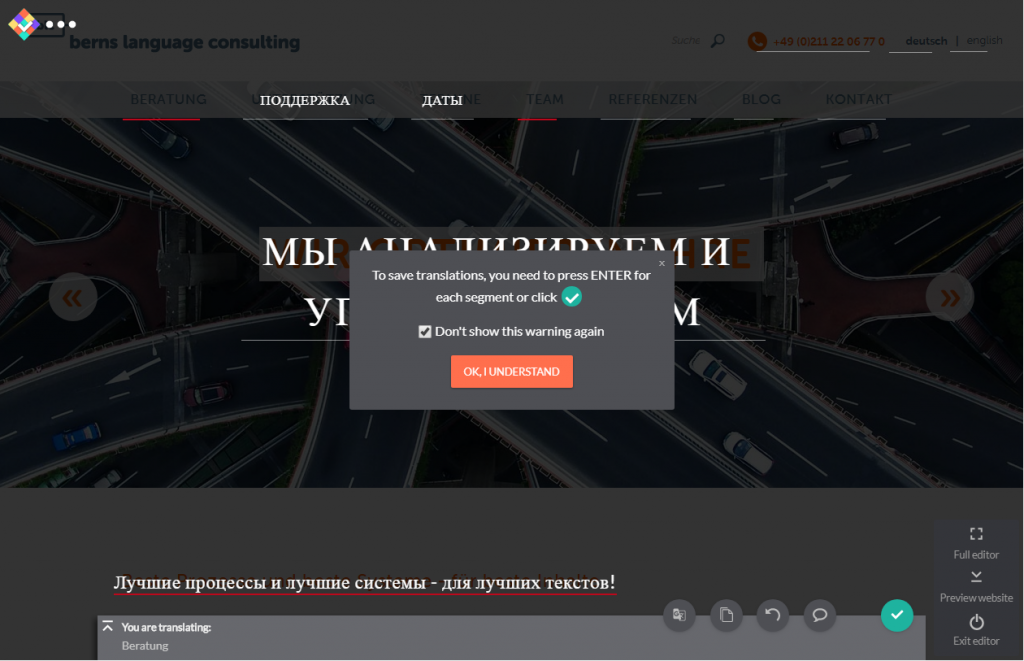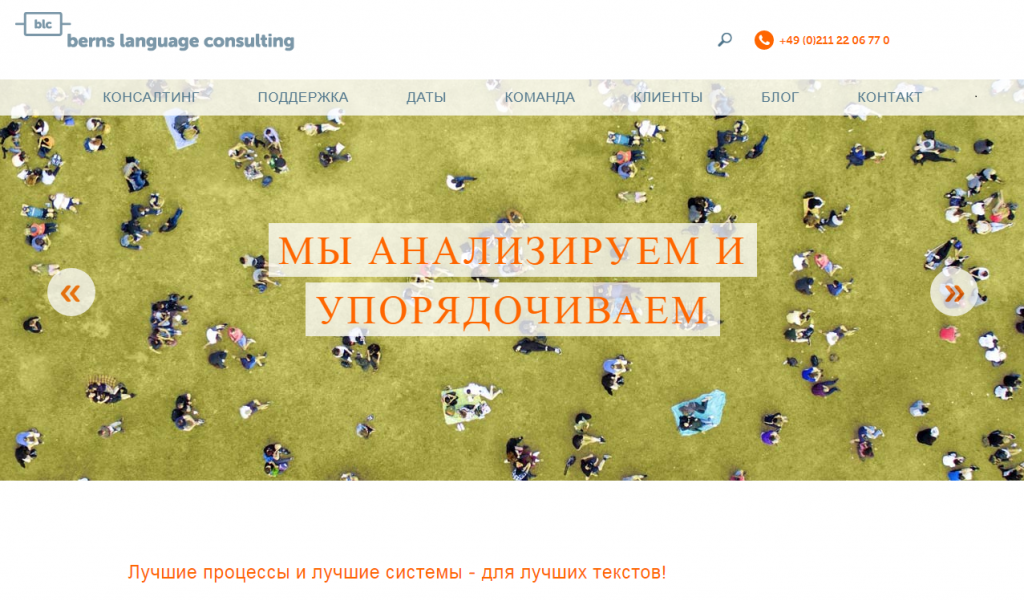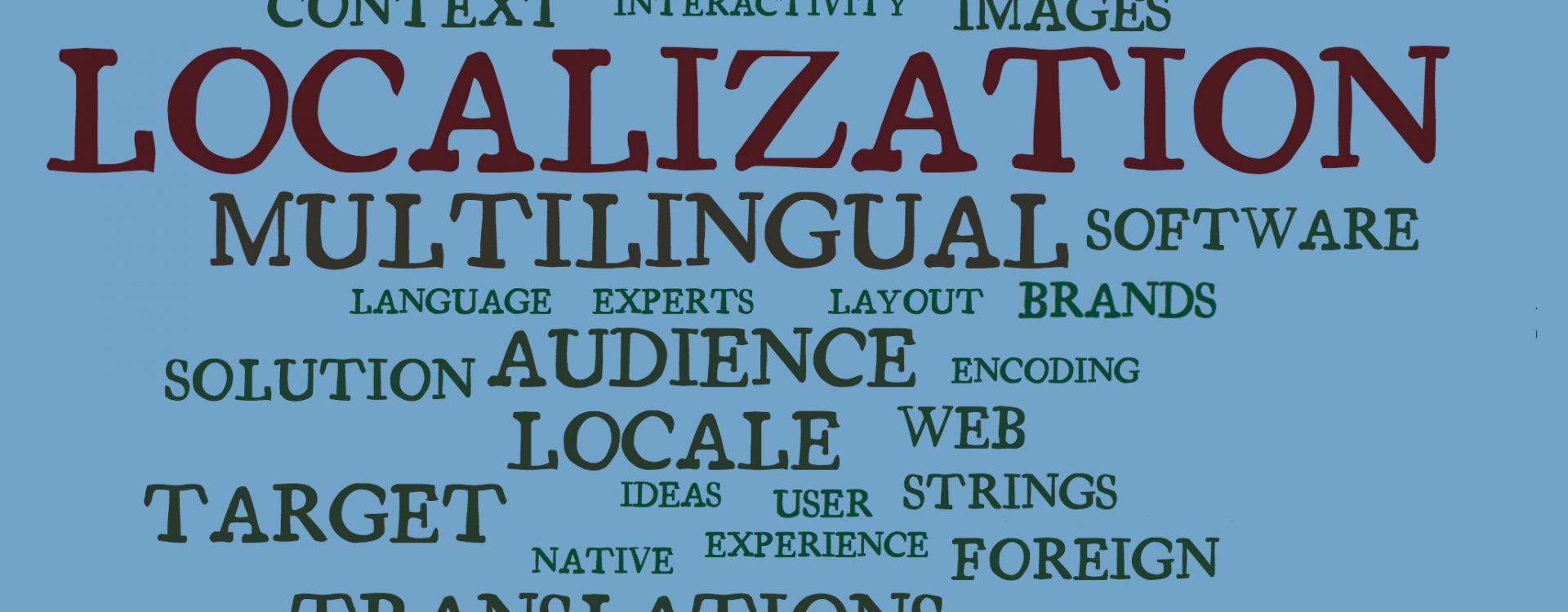Multilingual websites have long been a must in our global village. Neat flags representing language options adorn the homepage of every important company and organization. Behind these, all too often, lie incomplete, inconsistent translations with poor formatting and a lack of localization. But how can this be avoided? blc finds this pressing issue highly interesting and has prepared a few tips.
It is not easy to be global.
Website translations and localization is often performed in a painstakingly laborious process in the respective Web CMS (Content Management System for web content). But why does it turn out poorly more than not? There are numerous reasons for this. For example, WordPress, one of the world’s most popular Web CMSs, is not a convenient CMS tool for creating multiple language versions of a webpage. Either the multisite installation option must be selected or a plug-in is used to obtain this functionality.
Such plug-ins are available both in paid (WPML) and free (qTranslateX, Polylang) versions. But the actual translation still takes place in back-end forms, where neither translation memories nor termbanks can be accessed. For larger internet portals with a wealth of content and features, it is almost impossible to keep the translations consistent across all areas of the site when using such a method. The situation is similar with other Web CMS vendors, such as Joomla, TYPO3, etc.
Global and consistent – is it possible?
A common option is to export all the content to be translated from the Web CMS (using formats such as HTML, XML, CSV, PO, XLIFF etc.), translate it externally, and then import it back into the system. This can be done using export scripts (uploading and downloading of packages), or, more elegantly, directly via APIs offered by translation system developers or agencies. The advantage is that, in both cases, CAT tools and terminology resources can be fully exploited. The disadvantage is that the translation is performed in isolation from the interface. In this case, it is recommended to incorporate at least one correction loop directly into the content management system, where potential formatting PROBLEMS or incorrect translations can be more easily spotted.
On the one hand, a good solution for translating and localizing websites should provide extensive integration with the Web CMS and, on the other hand, allow the use of consistent terminology and translation memories. There are many different approaches to bringing these two worlds together. But the big breakthrough is still missing…
The best of all worlds?
One of the approaches taken by SDL, for example, is to offer a web CMS and CAT tool from a single provider in order to ensure optimal integration. Web content management and language technology hand in hand – an interesting development on the market, which could also be pursued by other tool developers. This topic requires a more in-depth look. And moreover, switching from a familiar and cherished web CMS is a tough pill to swallow.
A different and exciting approach has been taken by the cloud-based developer Text United. We reported in our last blog about how web content can be translated directly in the graphical user interface using the Overlay Translation Editor from Text United. A free Chrome extension exclusively conceived for website translation has since appeared. When translating, the results are instantly visible, and length restrictions are easy to heed. The advanced editor can be used for longer paragraphs, where TMs and glossaries can also be employed.

It also offers a machine translation feature for pre-translation of the website. But particularly in regards to websites, it must be emphasised that machine translations may only be used as a starting point. Without detailed post-editing, the risks far outweigh the benefits. The extension itself is a streamlined and cost-effective solution for smaller companies and even travel bloggers, for example, wanting to expand their target groups through English language blog posts.
Quick check for high-quality, multi-language, and localized websites
One thing is for certain: effective multi-language websites that win over customers and thus generate business require professional and flawless translations as well as localization to account for country-specific issues. What else needs to be considered besides translation quality? A few important points:
- Localization of cultural and legal aspects – an expert familiar with the market should review whether the content needs to be adapted for the respective country.
- Localization of graphics – are all graphics present and suitable for as many cultures as possible? Are all captions localized?
- Tags and links – are all tags localized and functional and matched to the keywords? Do all links lead where they should?
- SEO optimisation – keywords must be adapted to different search engines, e.g., Baidu for the Chinese market or Yandex for the Russian speaking market.

To make a long story short: website translation and localization cannot be taken lightly. And the effort is worth it! We look forward to your suggestions and experiences in the form of comments or messages.
[twitter_buttons display=tweet,follow,]





